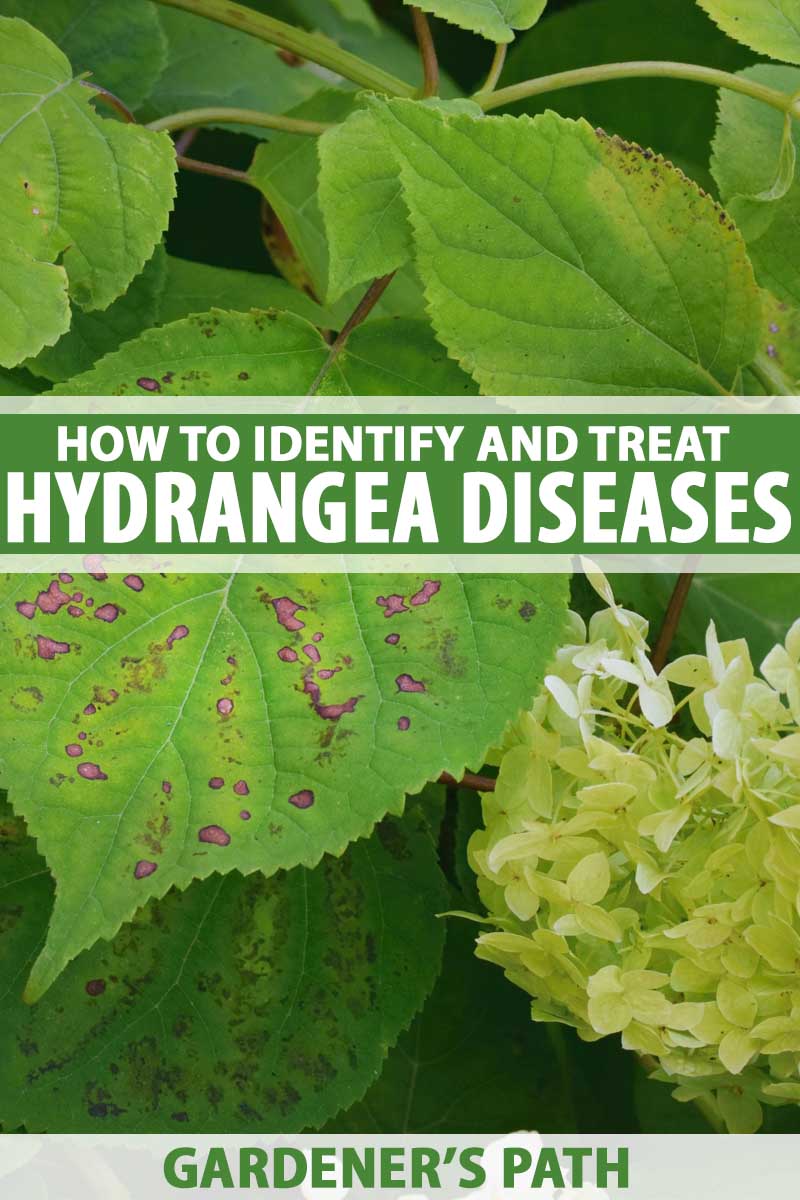Fascination About Hydrangea Leaves Turning Yellow
Wiki Article
Getting My Hydrangea Leaves Turning Yellow To Work
Table of ContentsGetting The Hydrangea Leaves Turning Yellow To WorkSee This Report about Hydrangea Leaves Turning YellowOur Hydrangea Leaves Turning Yellow IdeasNot known Incorrect Statements About Hydrangea Leaves Turning Yellow All About Hydrangea Leaves Turning YellowThe Greatest Guide To Hydrangea Leaves Turning Yellow
You can try to avoid fungal illness by maintaining your gardens neat and complimentary of particles. These leaves that will linger, waiting to assault in the next growing season.These can be located at yard facilities. Bear in mind to comply with the directions on the label of the fungicide you purchase. Copper fungicides are, but if they are overused they can end up being poisonous to your plant. Getting rid of infected leaves is also a great step. Clip the leaves, and eliminate them from the yard.
If they aren't obtaining sufficient water, their leaves will certainly brown. Hydrangeas have a in the midday sun, and recuperating as soon as the sunlight has actually shifted and the plants have time to recuperate. If this occurs consistently you may notice brownish and crunchy fallen leaves that are sagging. This is their way of allowing us know that it needs some added dampness.

Hydrangea Leaves Turning Yellow Fundamentals Explained
Developed plants may need to be sprinkled one to 3 times per week, depending on your problems. It might seem tempting to spray the fallen leaves down.Water the base of the plant,. When the plant has actually rebounded, you can resume a normal watering routine. The majority of varieties and varieties favor partial sunlight. Panicle hydrangeas love complete sun, however the remainder of the group actually likes partial shade. Partial shade supplies about 4 to 6 hours of sunlight.
The container should be big enough so the plant can expand and obtain all of the water and nutrients it requires. Area the container on a deck, or in an unethical place on a patio. You can additionally replace the plant with a panicle hydrangea. Panicles like the full sun.
So, no matter the range, strategy ahead and make certain your plant has lots of protection from the wind. You have a few choices here. You could hair transplant to a brand-new place, or you might produce a wind obstacle using another plant, or fence. To develop a wind barrier you could, or a hedge to block the wind.
Excitement About Hydrangea Leaves Turning Yellow
Decorative lawn, Rose of Sharon, or Holly bushes are just a few ideas of plants you could make use of to obstruct the wind. If you require to transplant, discover a place in your yard that is well shielded from sun and wind. Hair transplanting is best done in the fall or the spring.The plants area is the most essential element when it comes to obtaining well established and proper development. With a little planning on planting area and appropriate upkeep, you'll be able to ensure your hydrangeas!.
If Hydrangea leaves turn yellow and drops off later on, it's typically due to overwatering, as the plant can not uptake water and sheds the leaves to reduce off transpiration. Following this, Hydrangea leaves start to droop and shrivel. Because both conditions can create yellow leaves, you must spot the difference in between the overwatered and underwatered plant.
Nevertheless, you can save the plant from yellow leaves by providing it the proper light and placement. If your plant gets yellow leaves, relocate it to a dark area. Place Hydrangea plants inside your home near an east-facing home window. Dapple the plant with drapes or UV defense sheets to block direct warm.
The Best Guide To Hydrangea Leaves Turning Yellow
, and temperature alterations can create yellowing leaves and brown places. If it gets too cozy, the sides of the fallen leaves become yellow, transform brown and develop a crunchy structure.Heavy dirt can quickly block the oxygen supply to the origins and sever the link with the upper components of the plant (leaves). Hydrangea leaves change their color if they find small aggravations in the soil composition. This problem can cause the Hydrangea entrusts to turn yellow, struggle with leaf decreases, and render a sagging plant in sync with overwatering.
Yellow leaves in Check This Out Hydrangeas are the first signs of illness problem, usually adhered to by black places, browning, goes down, and wilting. Isolate the diseased or pest-infested plant from the healthy plants to stop condition spread. If it is a yard plant, get rid of all the contaminated fallen leaves making use of decontaminated devices and clean up all the debris.
Reducing off helps Hydrangea color unneeded weight and protection, permitting the development of new fallen leaves. The most effective time to prune Hydrangeas is spring when the plant is ready to grow vegetation for the following period. Examine for invested or unhealthy leaves and reduce the base of a stalk that joins the fallen leaves and stem.
Facts About Hydrangea Leaves Turning Yellow Uncovered
Stay clear of reducing healthy or eco-friendly leaves, and do not get rid of even more than 25% of the plant's foliage. The main factor behind the red leaves in Hydrangea is inadequate dirt or ecological conditions.Repot the plant yearly in spring or every 2 years if the growth rate is slow-moving (Hydrangea Leaves Turning Yellow).
There are six main reasons this may happen:: The plant does not obtain adequate sunlight.: The origins are either as well wet or also dry.: The plant is as well find cold.: The soil is not acidic or alkaline sufficient for the hydrangea.: The plant isn't getting the right nutrients it requires to stay healthy and balanced.
Each factor influences the plant in a manner that can be taken care of if we understand how to look after hydrangeas the appropriate means. When we discuss poor light for hydrangeas, we indicate that the plant isn't getting adequate sunlight. Hydrangeas favor bright light, but not direct, scorching sun. They usually prosper ideal with morning sunlight and mid-day shade.
The Ultimate Guide To Hydrangea Leaves Turning Yellow
Without sufficient sunlight, the fallen leaves can transform yellow, the plant can come to be weak, and it might produce fewer flowers. top article To make sure a hydrangea obtains ample light, it should be put in an area where it can take pleasure in the early morning light and be shielded from the extreme mid-day sunlight. Hydrangea Leaves Turning Yellow. Overwatering is when a hydrangea plant obtains even more water than it requires
This trouble is common in the fall as the weather condition modifications or if a hydrangea is grown in an area where it does not obtain enough heat from the sunlight. It is very important to know the right conditions for hydrangeas to prevent low-temperature anxiety. For instance, the majority of hydrangeas expand ideal in areas 6 to 9, where the environment is milder.

Report this wiki page